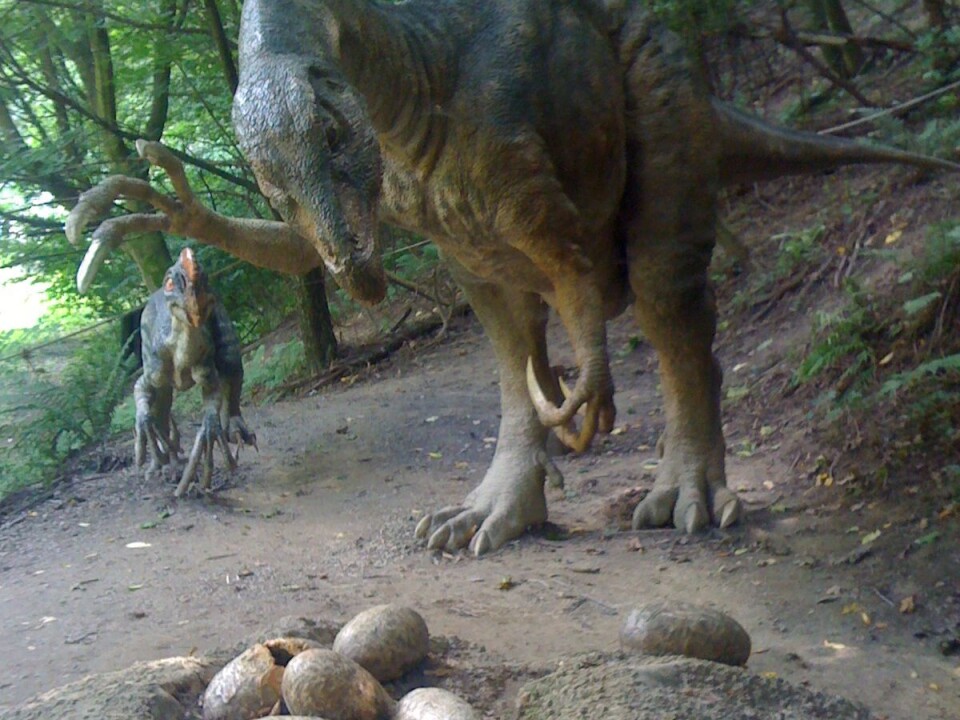
Science has always been driven by money
New project seeks to uncover the influence that money has had on history’s great scientific discoveries.
There’s no way around it. Money is involved in just about everything. But just how has money affected history’s great scientific discoveries?
We may now come closer to an answer, thanks to a new Danish-led research project, which examines the background of some of the great scientific discoveries of the past 200 years.
The project is headed by Danish science historian Peter C. Kjærgaard, a professor of evolutionary studies at Aarhus University..
By digging into the archives, he aims to trace the money path from the hands of science-minded people to the final research findings.

This method has enabled him to chart the intricate web of economic, scientific and political interests that led to the discovery of the world’s first dinosaur nest in the Gobi Desert in the 1920s.
“We have taken the initial steps towards the first major systematic historical studies of how money has affected the production of scientific knowledge,” says Kjærgaard.
“Regardless of where and when in the history of science we look, we can see that researchers have always depended on money in their work and personal lives. It sounds banal, but it’s important to understand that without money we wouldn’t have the scientific data that we have today.”
Lucrative human ancestor project
The project has so far resulted in four journal articles about the role of money in science.
We have taken the initial steps towards the first major systematic historical studies of how money has affected the production of scientific knowledge.
Peter C. Kjærgaard
The articles describe how money has affected all stages on the long and winding road that has led to the extensive knowledge we now possess about ourselves and everything around us. It’s a road that goes from continent to continent, filled with researchers, amateurs, children, wealthy enthusiasts, politicians and civil servants.
One of Kjærgaard’s personal research interests in this context is the story about how an exhibition in the 1920s for the first time found a dinosaur nest complete with fossilised eggs.
The discovery was made by US researchers. The expensive and extravagant expedition actually had a completely different purpose: to find the origin of man.
”The American Museum of Natural History arranged an extensive expedition to the Gobi Desert in Mongolia. Raising the necessary funds was easy because the expedition had a sensational objective.
Regardless of where and when in the history of science we look, we can see that researchers have always depended on money in their work and personal lives. It sounds banal, but it’s important to understand that without money we wouldn’t have the scientific data that we have today.
Peter C. Kjærgaard
The researchers had the explicit purpose to locate the remains of ‘the missing link’ – man’s earliest ancestor,” says the professor.
“If they had managed to find this ancestor, they could once and for all link man to the apes and the rest of nature. The expedition turned out to be a huge failure – but at the same time it was actually also a great success.”
Sensation: the world’s first dinosaur egg
The American scientists decided to travel by car. By driving cars instead of riding camels, they expected to cover far greater areas of the Gobi Desert much quicker.
The problem was that there were no gas stations in the desert. So in order for their plan to work, the cars had to be accompanied by a large camel caravan, which carried countless cans of petrol for the thirsty vehicles. This did not make the expedition any cheaper nor quicker. On the contrary.
The story about the fossilised egg shows that sophisticated research funding strategies were in place as early as in the 1920s.
Peter C. Kjærgaard
The convoy travelled through most of the 1.3 million km2 desert before they reached the spot which the Chinese authorities had allowed the Americans to excavate. Unfortunately, it turned out to be an area in which it was impossible to find human/ape fossils.
”They were allocated a section of the Gobi Desert that was so old that human ancestors couldn’t possibly have lived there. So they didn’t find what they were looking for. But they found something else: fossilised dinosaur eggs finely preserved in a nest – the first one ever, and that became a great sensation.”
News sensations attract sponsors
The news about the dinosaur eggs reached the US and received a great deal of media exposure.
This suited the researchers very well because they needed more funding to continue their work in the Gobi Desert. And they knew that sensations could arouse people’s interest in their research – and thus also arouse their willingness to depart with their cash.
“The researchers immediately started using this publicity to attract more funding. They decided to auction off the first dinosaur egg from the nest. This brought in several hundreds of thousands of dollars, which the scientists could then spend on new expeditions.”
But the money-conscious scientists also saw other money-making opportunities in their great discovery:
“Their strategy was to get individuals to sponsor their research with small amounts – $1 or $10. That yielded a lot of money, far more than the auction did,” says Kjærgaard.
“The story about the fossilised egg shows that sophisticated research funding strategies were in place as early as in the 1920s.”
More surprises in store
Kjærgaard believes that ’the quest for cash’ in the history of science will reveal much more about how scientists have actually made their amazing discoveries over the years. And it will also enlighten us about how these funding processes continue to affect not only cutting-edge research, but also the daily lives of scientists.
“Research relies on money on all levels. So by following the money, we gain an insight into the very colourful and complex story of how we ended up knowing what we know today about nature, civilisation and our history,” says Kjærgaard.
The first four articles from the international group of science historians can be found in the journal ISIS, in the section ’Follow the money: Networks, Peers, and Patronage in the History of Science’.
-------------------------------
Read the Danish version of this article at videnskab.dk
Translated by: Dann Vinther








